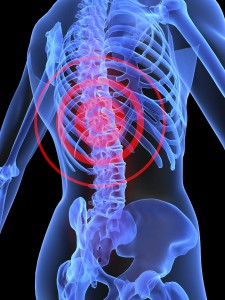Avoid Back Injuries by Wearing Backpacks Safely this Fall
 Back injuries can happen to anyone – including young students who head back to school wearing a backpack that’s too heavy or big for them.
Back injuries can happen to anyone – including young students who head back to school wearing a backpack that’s too heavy or big for them.
Indeed, more than 28,600 people were treated in a hospital or by a doctor for injuries related to wearing a backpack in 2013, according to statistics from the Consumer Product Safety Commission. Of those patients, nearly 30 percent were children between the ages of 5 and 18.
“Improperly used backpacks may injure muscles and joints and can lead to severe back, neck and shoulder pain, as well as posture problems,” said Dr. Daniel Green, orthopaedic surgeon and spokesman for the American Academy of Orthopaedic Surgeons. “Parents and teachers should educate kids on the proper way to wear a backpack to reduce the risk of injury.”
To avoid any injuries to the back or shoulders, the American Academy of Pediatrics recommends the following tips:
- Choose a backpack with wide, padded shoulder straps and a padded back.
- Pack light. Organize the backpack to use all of its compartments. Pack heavier items closest to the center of the back. The backpack should never weigh more than 10 to 20 percent of your child’s body weight.
- Always use both shoulder straps. Slinging a backpack over one shoulder can strain muscles.
- If your school allows, consider a rolling backpack. This type of backpack may be a good choice for students who must tote a heavy load. Remember that rolling backpacks still must be carried up stairs, they may be difficult to roll in snow, and they may not fit in some lockers.
Parents can also help prevent backpack-related pain by taking the following steps, according to the AAOS and Pediatric Orthopaedic Society of North America:
- Encourage your child or teen to tell you about numbness or tingling in the arms or legs, which may indicate a poor fit or too much weight is being carried.
- If the backpack seems too heavy, have your child carry some of them in their arms to ease the load on their back.
- Make sure the backpack is the appropriate size for your child.
- Watch your child to see if putting on or taking off the backpack is a struggle.
- Encourage your child to drop off heavier books at their locker throughout the day, if time permits.
Source: American Academy of Pediatrics; American Academy of Orthopaedic Surgeons, Pediatric Orthopaedic Society of North America
+ Learn about the physical therapy programs at Bon Secours In Motion.
+ Help a child reach their healthy weight and prevent diseases associated with childhood obesity. Learn about the Bon Secours In Motion Youth Fitness Program.

